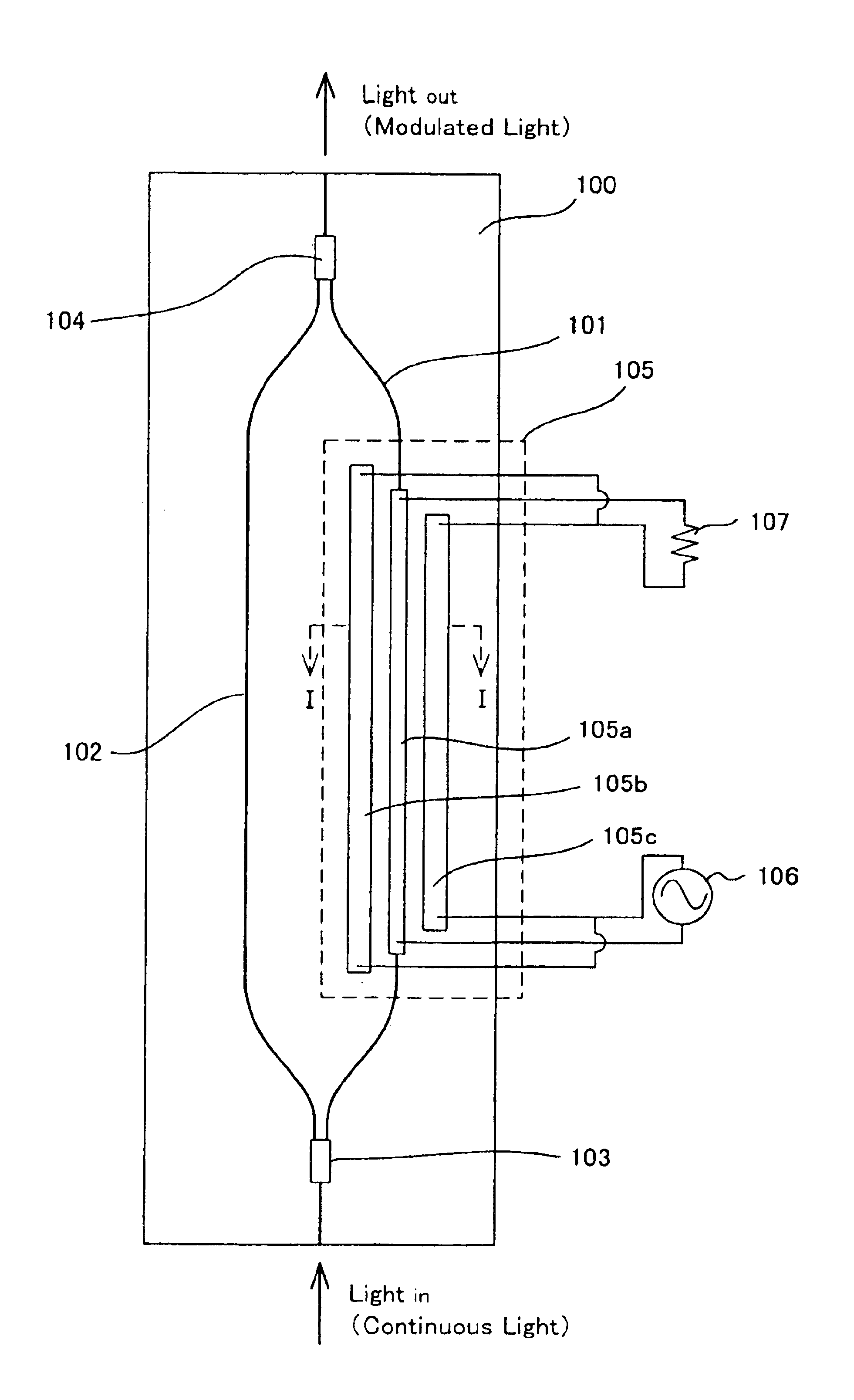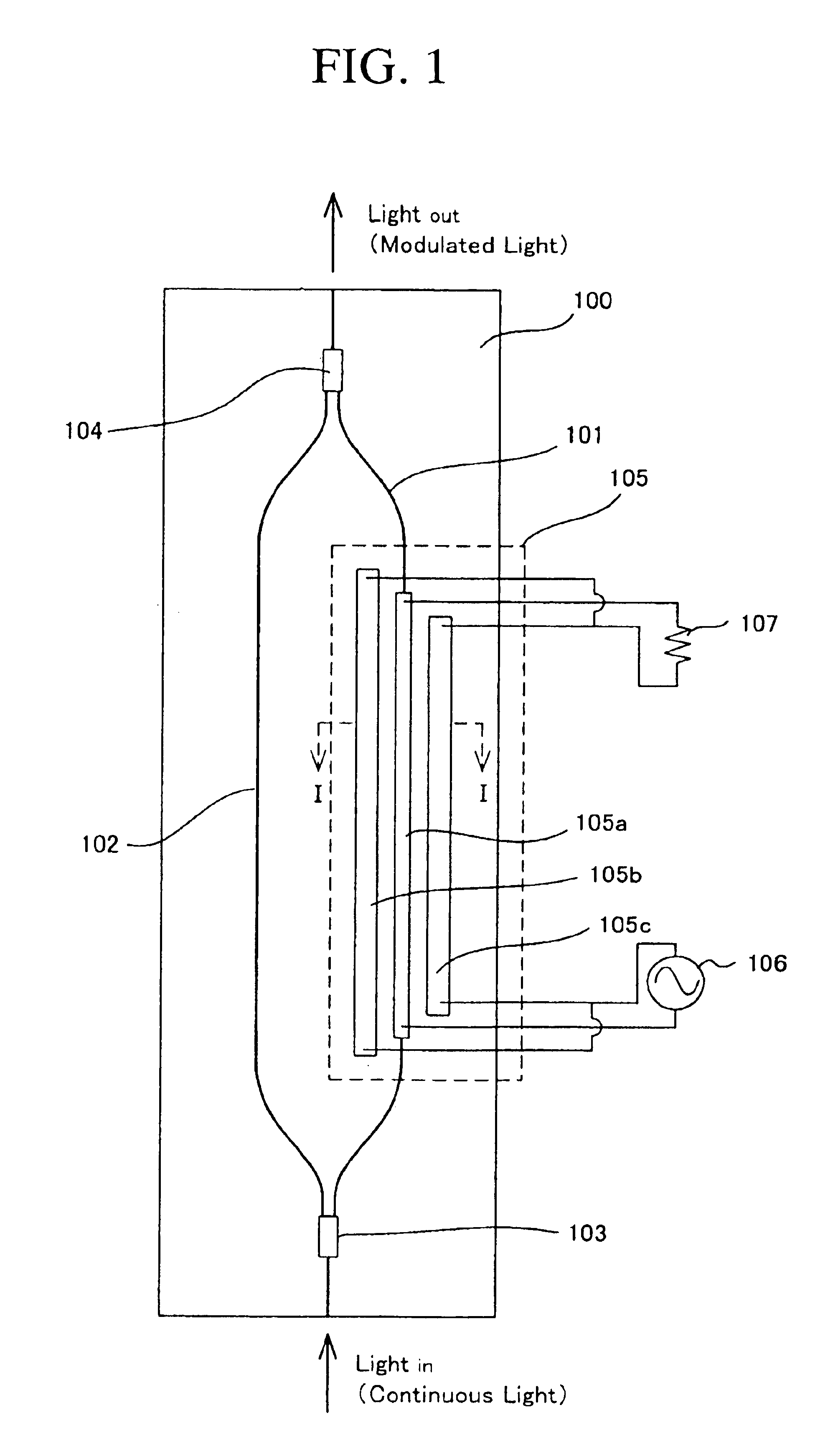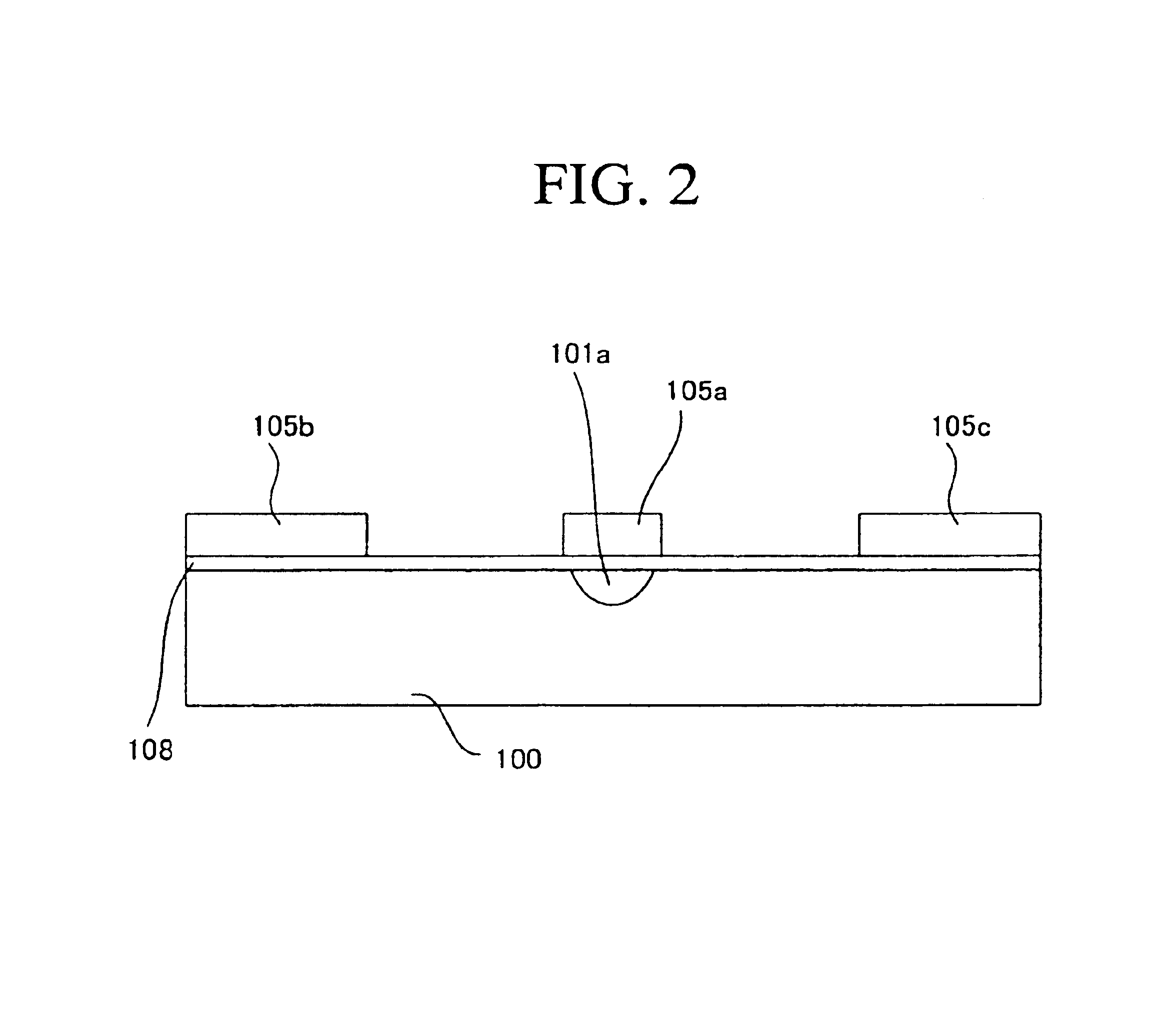Optical semiconductor device
a technology of optical semiconductors and semiconductor lasers, applied in the field of optical semiconductor devices, can solve the problems of large devices at the time of optical modulation operation, low optical modulation band, and energy loss generated by high-frequency electric signals
- Summary
- Abstract
- Description
- Claims
- Application Information
AI Technical Summary
Benefits of technology
Problems solved by technology
Method used
Image
Examples
first embodiment
FIG. 6 is a plane view showing a semiconductor optical modulator according to a first embodiment of the present invention. FIG. 7 is a sectional view taken along a IV—IV line in FIG. 6, FIG. 8 is a sectional view taken along a V—V line in FIG. 6, FIG. 9 is a sectional view taken along a VI—VI line in FIG. 6, and FIG. 10 is a sectional view taken along a VII—VII line in FIG. 6.
A Mach-Zehnder optical modulator according to the present embodiment is formed on a high-resistance InP substrate 1.
A high-resistance InP buffer layer 2 is formed on an overall surface of the high-resistance InP substrate 1. An n-type conductivity InP bias layer (n-InP layer) 4 having an almost square planar shape that passes through the almost middle is formed over the high-resistance InP buffer layer 2. A DC bias is applied to this n-InP bias layer 4 from the DC bias electrode, described later, and a thickness and a width of the n-InP bias layer 4 are shaped into about 1.5 μm and 26.0 μm respectively. A dopan...
second embodiment
FIG. 23 is a plane view showing a semiconductor optical modulator according to a second embodiment of the present invention. FIG. 24 is a sectional view that is viewed along a VIII—VIII line in FIG. 23. In FIG. 23 and FIG. 24, the same symbols as those in FIG. 6 to FIG. 10 denote the same elements.
In the semiconductor optical modulator according to the second embodiment, the i-InP layer 12, the p-InP layer 13, and the p-InGaAs layer 14 are formed uniformly on or over the i-MQW core layers 11 of the first to fourth optical waveguides 5, 6, 20, 21 and the first and second MMI optical couplers 7, 8 constituting the Mach-Zehnder interferometer along the direction parallel with the optical axis.
In other words, the i-InP layer 12, the p-InP layer 13, and the p-InGaAs layer 14 are formed in the spaces between a plurality of phase modulation electrodes 18a, 18b, which are formed at a distance on an upper surface of the p-InGaAs layer 14, to leave no spaces therebetween.
Therefore, the SI-InP...
third embodiment
FIG. 25 is a plane view showing a semiconductor optical modulator according to a third embodiment of the present invention. FIG. 26 is a sectional view that is viewed along a IX—IX line in FIG. 25. In FIG. 25 and FIG. 26, the same symbols as those in FIG. 6 to FIG. 10 denote the same elements.
In the semiconductor optical modulator of the present embodiment, the SI-InP layer 15 between the i-MQW layers 11 of the first and second optical waveguides 5, 6 that constitute the Mach-Zehnder interferometer is not separated in areas between them and is formed continuously. A height position of the upper surface of the SI-InP layer 15 almost coincides with that of the upper surface of the p-InGaAs layer 14 over the i-MQW layers.
The steps of the manufacturing method in the third embodiment are almost similar to those in the first embodiment. However, in the case of the present embodiment, in the wet etching step explained with reference to FIG. 17 and FIG. 22 in the first embodiment, the SI-In...
PUM
 Login to View More
Login to View More Abstract
Description
Claims
Application Information
 Login to View More
Login to View More - R&D
- Intellectual Property
- Life Sciences
- Materials
- Tech Scout
- Unparalleled Data Quality
- Higher Quality Content
- 60% Fewer Hallucinations
Browse by: Latest US Patents, China's latest patents, Technical Efficacy Thesaurus, Application Domain, Technology Topic, Popular Technical Reports.
© 2025 PatSnap. All rights reserved.Legal|Privacy policy|Modern Slavery Act Transparency Statement|Sitemap|About US| Contact US: help@patsnap.com



